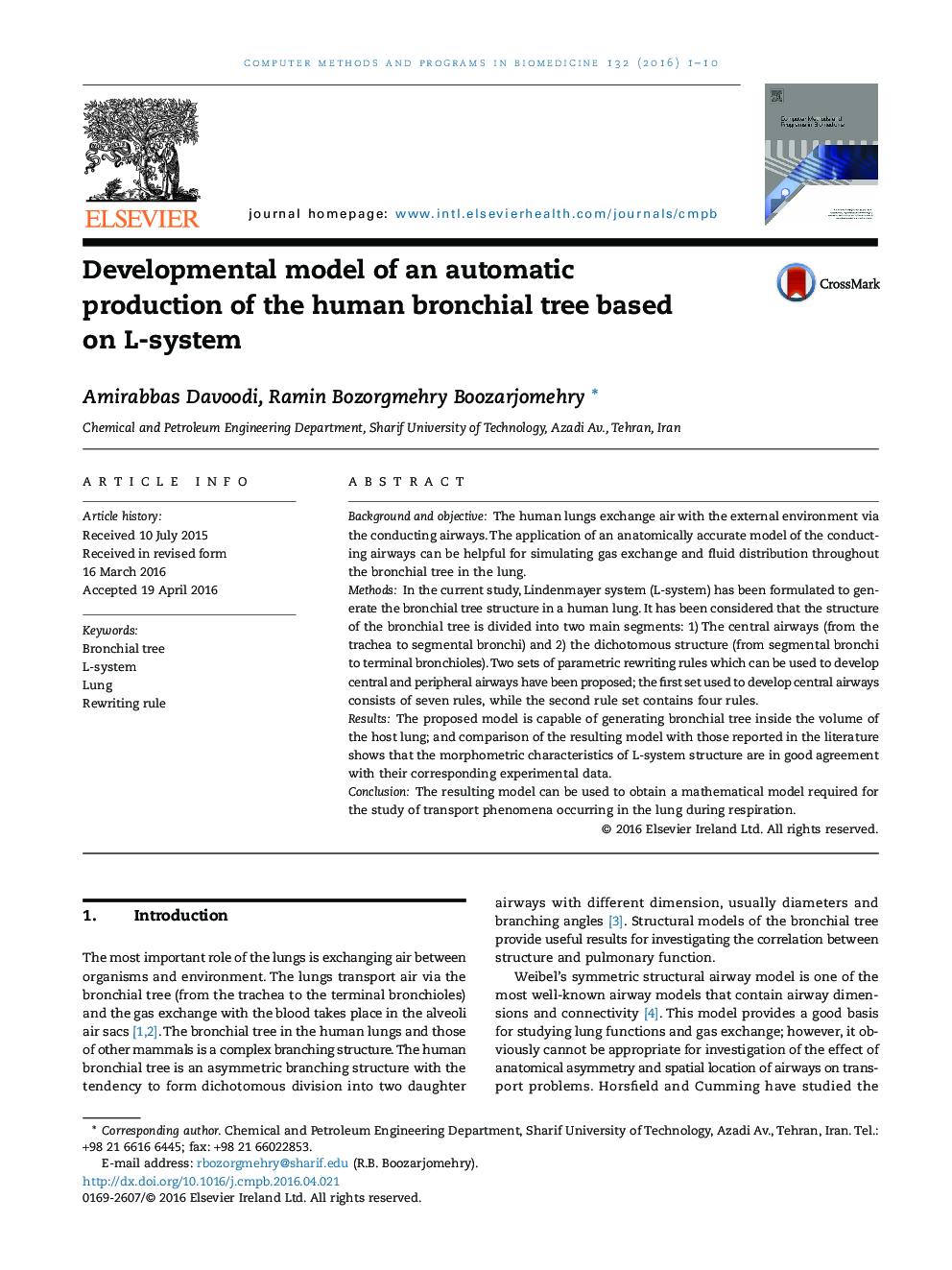| Article ID | Journal | Published Year | Pages | File Type |
|---|---|---|---|---|
| 468604 | Computer Methods and Programs in Biomedicine | 2016 | 10 Pages |
•A framework with capability of automatic generation of the human bronchial tree has been proposed.•The proposed framework is developed based on Parametric Lindenmayer system (L-system).•The structure is generated separately into the lung lobes with accurate geometry, taken from the CT Images.•The generated bronchial tree can be used in phenomenological study of gas exchange.
Background and objectiveThe human lungs exchange air with the external environment via the conducting airways. The application of an anatomically accurate model of the conducting airways can be helpful for simulating gas exchange and fluid distribution throughout the bronchial tree in the lung.MethodsIn the current study, Lindenmayer system (L-system) has been formulated to generate the bronchial tree structure in a human lung. It has been considered that the structure of the bronchial tree is divided into two main segments: 1) The central airways (from the trachea to segmental bronchi) and 2) the dichotomous structure (from segmental bronchi to terminal bronchioles). Two sets of parametric rewriting rules which can be used to develop central and peripheral airways have been proposed; the first set used to develop central airways consists of seven rules, while the second rule set contains four rules.ResultsThe proposed model is capable of generating bronchial tree inside the volume of the host lung; and comparison of the resulting model with those reported in the literature shows that the morphometric characteristics of L-system structure are in good agreement with their corresponding experimental data.ConclusionThe resulting model can be used to obtain a mathematical model required for the study of transport phenomena occurring in the lung during respiration.
